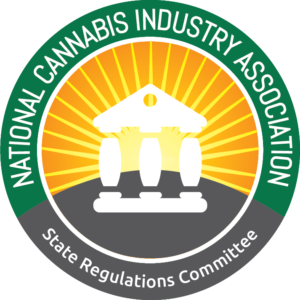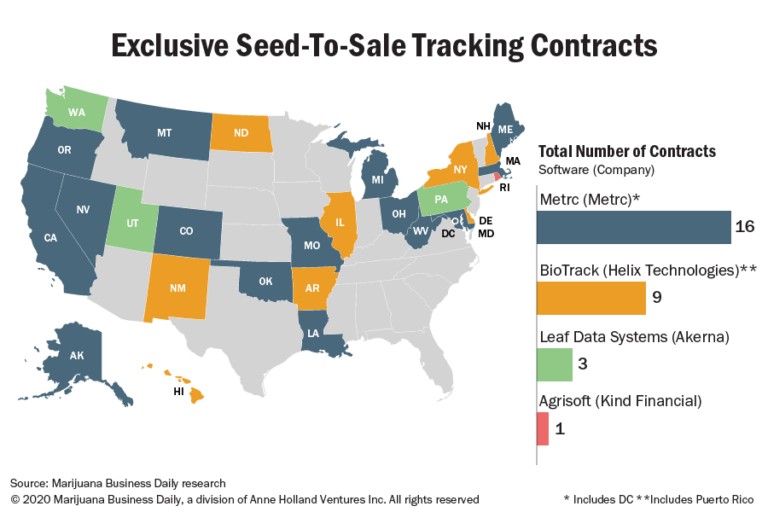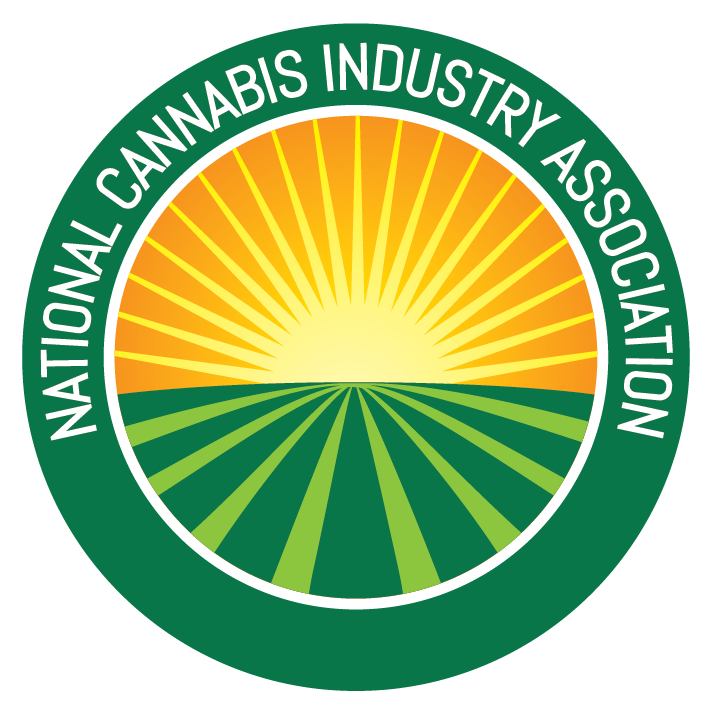Member Blog: 9 Standard Operating Procedures Every Dispensary Should Have

by Tommy Truong, Director of Partnerships at KayaPush
Standard Operating Procedures (SOPs) are the documents, protocols, systems, and procedures that your cannabis dispensary should have in place to manage day-to-day operations.
SOPs help dispensaries in many ways: From optimizing proper employee management systems such as dispensary payroll and onboarding to ensuring compliance with regulations are consistently met, and more.
What are the top dispensary SOPs to use?
There are hundreds of dispensary SOPs that could be created, and they should constantly be evolving as your store grows.
Overall the goal of dispensary SOPs is to increase efficiency and help you become more profitable in the long run. That being said, these are the 9 types of dispensary SOPs we recommend you start with as you build and scale your dispensary store.
1 – Opening & closing procedures and SOPs
All brick and mortar retail stores should have SOPs in place for opening and closing the store. But especially stores that require high-security measures like cannabis retail stores.
Opening and closing checklists for this special breed should include the following:
Opening checklist:
- Vibe check: Turn on lights, music, temperature, put out signs, clean.
- Check for any signs of a break-in or forced entry every morning.
- Make sure that all products in the display and stores are accounted for.
- Put away any orders.
- Review inventory.
- Turn on and start up all software systems.
- Ensure you are in dress code (if applicable)
End of day checklist:
- Check that the security cameras are working.
- Lock all the doors and display cabinets.
- Check and report any obvious security threats/ logbook.
- Generate sales and compliance reports.
- Cash-out protocols.
- Closing the cash registers and POS system.
- Turn off lights, music, bring in signs.
- Clean and sanitize the store.
- Lock all doors and perform security checks.
2 – Customer check-in procedures and SOPs
Many cannabis dispensaries violate their customer check-in procedures and end up facing fines and license suspensions by regulators. Due to this, it is crucial that you implement customer check-in SOPs to ensure compliance.
Customer check-in procedures include:
- Proper budtender training on protocols beforehand.
- Screen every customer entering the store to ensure they are of legal age.
- Ensure customers have a valid license to purchase cannabis.
- Scan the customer’s ID to make sure it is genuine and valid.
- Check the customer’s age, and enter these details into your customer database or tracking system.
- Check the system to ensure the customer has not already gone over their purchasing limit at a different store.
- Follow proper serving protocols.
3 – Sales transaction process and SOPs
Sales transaction processes are crucial to the business because this is how the company generates its revenues. Keeping track of these is key. Do you have the following sales SOPs?
Sales transaction processes could include:
- Greeter procedures (first customer contact),
- Boxing and packing procedures.
- Cashier procedures.
- Answering customer product questions.
- Recording product sales information into tracking systems.
- Recording shipping information.
- Processing various forms of payment.
- Gathering sales tax to submit.
It would help if you integrated your SOPs with the technology you’re using, like cannabis-compliant POS systems.
4 – Delivery procedures and SOPs
Cannabis deliveries can get complicated as they tend to include strict guidelines around logistics. This is why it’s essential there are SOPs built around these logistics.
Delivery procedures could include:
- Packaging and shipping guidelines with regards to the different types of products.
- Procedures in place to pack and mark fragile deliveries — like glass bongs — clearly to ensure safe delivery.
- Details and SOPs around third-party deliveries.
- Sop’s around management tools or software.
- Inputting data into the tracking software or POS system.
- Proper accounting and documentation of the aforementioned.
5 – Security, accounting, and cash management protocols and SOPs
Cannabis retail stores face many challenges when storing and moving cash from the store to the bank. Since dispensaries are not legal at the federal level in the United States of America, they are limited in the services they can receive from banks. As a result of those limitations, dispensaries struggle with large amounts of cash being stored on the dispensary’s premises, so tight SOPs surrounding how to navigate these challenges are crucial.
Security and cash management protocols could include:
- What employees are allowed in sensitive areas like stores and cash safes.
- How long to keep security camera recordings and how to report a robbery.
- How often armored trucks can pick up cash.
- Who gives the cash to the trucks.
- How the cash is stored while at the dispensary.
- Who is keeping track of accounting and line items?
- Who is keeping track of inventory management?
- How are taxes being filed and accounted for, and by who?
6 – Track-and-trace & inventory management and SOPs
Track and Trace SOPs are important for every cannabis dispensary. In order to comply with the regulations, you have to adopt track and trace SOPs into your inventory management system.
These track and trace SOPs should cover:
- Inventory management processes like procurement.
- Transportation to store.
- Product transfers.
- Audits.
- Track and trace software procedures that comply with local regulations.
Given how important track and trace SOPs are for compliance, you should automate this process if possible. Track-and-trace automation software can help you define the roles for each activity and integrate compliance checks.
7 – Quality assessment SOPs.
Quality assessment SOPs will make sure your product is up to the required standard by the regulators and that you are not violating any laws over what ingredients can be included in your products and how they are made. Failure to comply with these SOPs or pass a quality assessment could leave a dispensary owner at risk of losing their license.
Quality assessment SOPs could include:
- Purchasing products from verified sellers.
- Ensuring products are tagged within tracking systems.
- Ensuring you are selling products that you can legally sell within your geographic location.
- Product feedback requests.
8 – Product recalls and emergencies and SOPs
Product recall SOPs will come into play when a defective product needs to be recalled from the market. This can be stressful for the team as it will lead to customers complaining, and management concerned about losses being recorded. One of the most valuable assets to have in this situation would be SOPs that guide your team on how to act in this situation without losing their cool or professionalism.
Recall SOPs could be:
- How /who contacts purchasers.
- Who is on top of product updates (do you have a compliance manager?).
- Product recall script.
9 – Employee Management SOPs
Previously, these SOPs have been focused on inventory and store management, however, managing your staff is another large part of any dispensary operation.
When managing your staff it is recommended that you use employee management software to alleviate the stress of manually running operations such as dispensary payroll, scheduling, onboarding, or time clock adjustments.
Using software alone can eliminate the need for some of these SOPs but if you do choose to go the manual route you should have SOPs for the following procedures.
Employee management SOPs could be:
- How do you onboard employees?
- Who manages their forms and licenses?
- Who writes and manages the schedules?
- How do employees swap shifts?
- How do staff clock into shifts?
- How runs payroll?
- How are staff paid?
- How are taxes paid?
- How are employees’ performances reviewed, and by who?
Conclusion
These are the major SOPs that we believe you should have in place before opening or scaling, but don’t forget that enforcing them is just as crucial as implementing them!
The best way to run a compliant, systematic, and streamlined dispensary is to use great technology to help you succeed!
Consider using a project management tool to help you stay on top of all your tasks, a people management solution for payroll, HR, time tracking, and scheduling, and a dispensary POS solution that integrates with track and trace technology and people management solution for the best results. By using the tools paired with standard operating procedures your dispensary is sure to succeed.
 Author Tommy Truong is the Director of Partnerships at KayaPush; the cannabis software helping dispensary owners manage their employee HR, scheduling, and payroll. KayaPush also integrates with leading dispensary POS systems. Tommy loves hot sauce, fried chicken, and running with his Boston terriers.
Author Tommy Truong is the Director of Partnerships at KayaPush; the cannabis software helping dispensary owners manage their employee HR, scheduling, and payroll. KayaPush also integrates with leading dispensary POS systems. Tommy loves hot sauce, fried chicken, and running with his Boston terriers.
Committee Blog: Re-thinking Cannabis Track and Trace Models — A Sustainable and Scalable Approach

 by NCIA’s State Regulations Committee
by NCIA’s State Regulations Committee
Contributing authors Jennifer Gallerani, Tim Gunther, Elise Serbaroli, and Erin Fay
The COVID-19 pandemic and subsequent recession powerfully demonstrated that the cannabis industry is providing essential medicine and products to countless Americans, as well as creating jobs and tax revenue. Retail sales of medical and adult-use cannabis in the United States were on pace to eclipse $15 billion by the end of 2020, and if you include ancillary products and services, the industry is estimated to reach $68.4 billion in 2021. The U.S. cannabis industry is experiencing rapid job growth, boasting an estimated 300,000 full-time jobs in 2020. Those numbers are expected to almost double by 2024. Over the next four years, the industry is expected to add nearly 250,000 full-time equivalent positions. By comparison, roughly 271,000 people currently hold beverage manufacturing jobs. These numbers demonstrate with sureness that the U.S. cannabis industry is on a high-growth trajectory, which makes it imperative that the market operate under a practical regulatory framework that benefits both regulators and operators.
Most states that have approved some form of legal cannabis sales (medical and/or adult-use) have also selected a single, mandated technology platform that all operators must use to track and trace their cannabis seeds, plants, and end products. Some iterations of the current track and trace model — which is primarily centralized approach — sets businesses, employees, and regulators up to fail. Of course, it also further limits the competitiveness of the regulated market with the unregulated market, and the ability for policymakers to be confident that cannabis consumers in their states are obtaining taxed, tested, and regulated products.
Local governments are missing out on tax revenue, and businesses (both large and small) are forced to spend unnecessary resources on a system that is fundamentally flawed. The centralized model, contracting with one specific software provider, and mandating operators to use that software provider in order to stay compliant, is wreaking havoc on the entire U.S. cannabis industry and is not sustainable for a federally-legal and global supply chain.
As a team, the National Cannabis Industry Association’s State Regulations Committee’s Technology and Compliance Subcommittee has spoken to regulators, operators, and international technology providers in the interest of presenting a practical track and trace solution to benefit the industry as a whole. This is the first blog in a series that will highlight the issues that cannabis operators and regulators are facing because of the current centralized state-mandated track and trace model. We propose that the U.S. cannabis industry operate under a more practical framework that has a higher probability of success for regulators and cannabis businesses through slight changes and improvements based on proven best practices.
The History of Track and Trace in the U.S. Cannabis Industry
Track and trace systems serialize assets to identify where assets are (track) and to identify where assets have been (trace). Track and trace is not something new. It is the globally acknowledged standard for product movement and reconciliation in both the Pharmaceuticals and Consumer Packaged Goods (CPG) industries. A secure track and trace system combines material security and information security elements to confirm assets are legitimately produced and sourced, following a pre-defined and auditable path.
As the regulated cannabis markets started to take shape and mature in 2012, one of the driving factors that shaped the need for a track and trace system was the 2013 U.S. Department of Justice Cole Memorandum (Cole Memo). The Cole Memo indicated for the first time that the federal government would only intervene in states that failed to prevent criminal involvement in the market, sales to youths, and illegal diversion to other states.
The first four states to legalize adult-use cannabis were Colorado, Oregon, Washington, and Alaska. All four of these states instituted a market-based licensing system to regulate the commercial activity of cannabis sales. The intentions of the newly instituted policies were two-fold: protect consumer health and minimize diversion, both of which align with the core principles of the Cole Memo. To meet these intentions, the states instituted procedures for inventory control and tracking documentation using a state-mandated centralized model, in an effort to create a transparent and controlled system of oversight within the cannabis industry.
As the industry has developed over the years, most states that have approved some form of legal cannabis sales have selected a single mandated technology platform that all operators must use to track and trace their cannabis seeds, plants, and cannabis products. As shown in Figure 1, the majority of legalized states have chosen METRC as their exclusive contractor of track and trace services.

Figure 1: https://mjbizdaily.com/metrc-sees-sale-tracking-opportunities-in-new-cannabis-markets/
A Scalable and Sustainable Track and Trace Solution
The legal cannabis market has changed significantly since 1996 and it is important for the industry to re-evaluate the intention and implementation of track and trace. Regulatory bodies contracting with one track and trace technology provider and mandating operators to use that specific provider in order to stay compliant is problematic for many reasons. Time has shown that the current centralized model is fiscally irresponsible and ultimately counterproductive, with significant negative externalities, including ethical concerns such as anti-trust issues. Most recently, an Oklahoma cannabis operator (seeking class-action status) initiated litigation against the state’s Medical Marijuana Authority (OMMA), alleging that the state exceeded its authority by requiring licensees to pay for a state-mandated track and trace program, and that the state’s contract with METRC creates an unlawful monopoly, among other claims.
To provide an analogy, let’s think about how businesses are required to report taxes. The IRS sets out certain rules and every business must report their income and assets according to that framework. Technology providers (such as TurboTax, Tax Slayer, H&R Block, etc.) have built scalable products to support businesses in reporting their taxes. The IRS does not mandate that businesses use one single specified software in order to report their taxes. Doing so would kill competition, introduce a monopoly, and eliminate any incentive for the technology providers to improve their product. By the IRS allowing free competition over the realm of tax preparation and processing software, the public benefits from the technology companies being incentivized to update and improve their software features and benefits.
The centralized model is crippling the entire industry as system failures are occurring on a more frequent basis, and its after-effects are causing a more detrimental and wide-ranging impact as the industry grows at an exponential rate. Most recently, METRC’s integration functionality (how third-party business operations software communicates to the state’s system) was down for more than fourteen days in California, causing significant problems in the nation’s largest cannabis market. One software provider and its tag-producing partners are benefitting, while setting industry regulators and operators up to fail. One software provider cannot meet the current or future needs of regulators and operators, especially not on a national level. Meanwhile, there are many excellent software providers that specialize in track and trace. The free market should determine the most efficient and user-friendly approach to allow businesses to stay compliant and accurately report to the appropriate regulatory authorities.
By leveraging the knowledge and experience the industry has gained over the last 20 years, we can incorporate best practices from other industries’ and other markets’ track and trace systems, and set regulators and operators up for success.
Join us as we dive deeper into the issues surrounding compliance and track and trace in the cannabis industry. Our multi-part blog series provides an in-depth look into the technical shortcomings of the current centralized approach and provides a roadmap for implementing a distributed model approach. Some of the disadvantages we will cover in the subsequent posts include:
Impact of System Failure: The current centralized model provides a single point of failure: if the system goes down, all licensee operations must stop operating entirely. In some cases, operators may manually record activity during a system failure, and then manually enter the activity when the system resumes. This introduces a high risk of human error. No backup system or alternative means of recording through the use of technology exists since the state relies on only one system.
Challenges with Scalability: The history of performance with centralized track and trace systems demonstrates that there are significant challenges in scalability because of multiple system failures and shutdowns. The system would benefit from a more advanced track and trace capability, specifically with its API (Application Programming Interface). Many times it is not the technology of the licensee system, but the technology design of the state-mandated systems.
Fiscal and Environmental Impacts: Licensees are required to purchase plant and product tags from the single state-mandated vendor, which creates a fixed price system that is typically not in favor of a licensee. It is also creating a sustainability issue in the industry, as the plant and product tags are single-use. More operators are speaking up about the waste it is generating in our cannabis industry.
Interested in joining us in establishing an effective and scalable track and trace framework for regulators and operators in the legal cannabis space? Click here to stay updated on the State Regulations Committee, and the efforts that it’s Technology and Compliance Subcommittee are taking to improve and advance track and trace nationally. Let’s close the informational gap between operators and regulators, and help the entire industry move forward together.
Stay tuned for the next two blog posts in our multi-part series!
#cannabisindustry #legalcannabis #trackandtrace #wearethecannabisindustry #cannabiscompliance

 Author Tommy Truong is the Director of Partnerships at KayaPush; the cannabis software helping dispensary owners manage their employee HR, scheduling, and payroll. KayaPush also integrates with leading dispensary POS systems. Tommy loves hot sauce, fried chicken, and running with his Boston terriers.
Author Tommy Truong is the Director of Partnerships at KayaPush; the cannabis software helping dispensary owners manage their employee HR, scheduling, and payroll. KayaPush also integrates with leading dispensary POS systems. Tommy loves hot sauce, fried chicken, and running with his Boston terriers. 

 by NCIA’s
by NCIA’s 